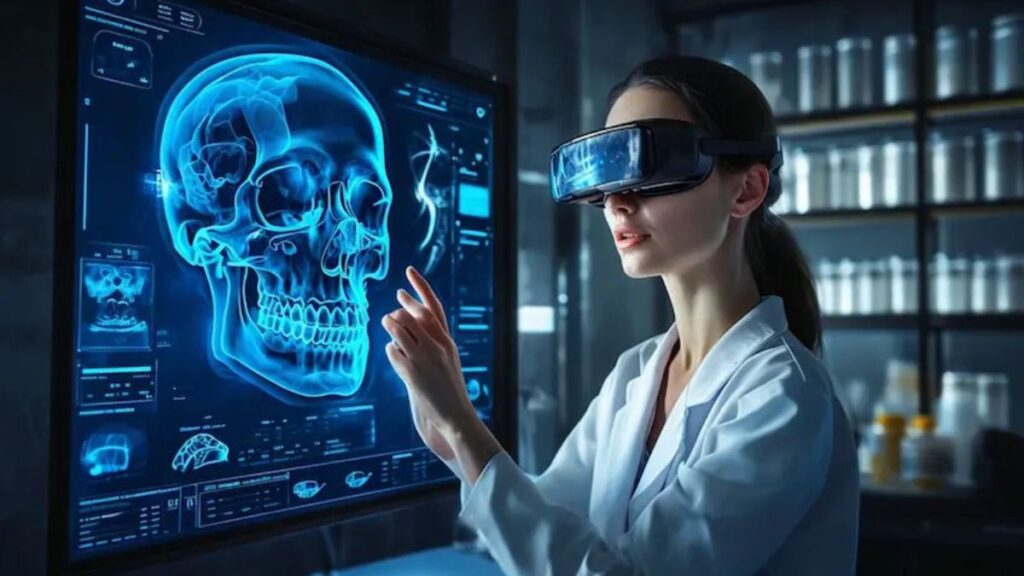Nerovet AI Dental is an advanced platform that uses artificial intelligence (AI) to assist dentists in diagnosing, planning, and monitoring dental health. Rather than relying solely on the dentist’s eye and experience, this system combines patient data, imaging (like X-rays or intraoral scans), medical history, and predictive modeling to offer insights that are more precise.
In simple terms, Nerovet AI acts as a smart helper: helping dentists spot issues earlier, plan treatments more personally, and track oral health in a more proactive way.
How Nerovet AI Transforms Diagnosis
Early Detection Beyond What We See
One of the biggest advantages of Nerovet AI is its ability to pick up signals of dental issues that might otherwise go unnoticed. Tiny cavities, early stages of gum disease, or subtle misalignments show up in imaging long before they produce symptoms. The AI’s pattern recognition and imaging analysis help flag those issues early.
Using Predictive Analytics
Besides looking at what’s now, Nerovet AI tries to see what might come. By using historical data—medical history, past imaging, patient behavior—the system can forecast risk of decay, gum disease progression, or other oral problems. Those predictions allow dentists (and patients) to act before a small problem becomes big.
Personalized Treatment Planning
No two mouths are the same. Patients vary in their dental history, anatomy, habits, and even in their preferences. Nerovet AI takes all that into account. It helps craft treatment plans that are tailored—not generic. Whether it’s deciding on fillings, orthodontics, cleaning schedules, or more advanced work, the plan built by a dentist assisted by Nerovet tends to be more fitting.
Plus, the AI approach often reduces invasive work. If a problem is caught early, you may avoid more painful or extensive procedures later. That means less discomfort and often lower cost in the long run.
Improving Patient Experience
Reducing Anxiety & Building Trust
Let’s face it: many people dread the dentist. The drill, the unknown, potential pain—it adds up. Nerovet AI helps here by making treatments more predictable. When patients know in advance what to expect, what problems may be detected, and see clear visuals of what’s happening with their teeth, fear tends to drop. Transparency is powerful.
Faster & More Efficient Processes
Traditional dental workflows often involve repeated imaging, waiting for lab results, scheduling delays, and sometimes revisions of treatment plan once new findings show. With AI support, many of these delays shrink. Imaging is analyzed faster, treatment planning can begin sooner, and follow-ups are more targeted. That means fewer visits, fewer surprises, less time spent in waiting rooms.
Benefits for Dentists & Clinics
From the practitioner’s side, there are solid advantages.
-
Higher Diagnostic Accuracy: AI helps reduce human error. Missed tiny cavities, misread images, or overlooked early stages of disease become less likely.
-
Better Resource Use: Automated tasks (imaging analysis, administrative work) free up time for dentists and staff. That lets them focus on care, patient interaction, and complex cases.
-
Data-Driven Decisions: With richer analytics, clinics can track outcomes, refine their practices, and make decisions grounded in evidence, not just experience or intuition.
Key Technologies Behind Nerovet AI Dental
To understand how it works under the hood, here are the main tech components:
-
Machine Learning Algorithms: These learn from large sets of imaging and patient records to detect patterns. Over time they get better at spotting anomalies.
-
Advanced Image Processing: AI can highlight issues in radiographs or scans, maybe showing changes in bone density or enamel that are subtle but important.
-
Data Integration: The system pulls together multiple sources: medical history, imaging, behavioral data. This gives a fuller picture of oral health rather than isolated pieces.
-
Predictive Modeling: Using past data to forecast future problems is huge. It’s not perfect, but it gives both clinician and patient a heads-up—what to watch out for, what preventive steps might help.
Challenges & Considerations
Even though Nerovet AI Dental is promising, it isn’t magic. There are real challenges that must be addressed.
Data Privacy & Security
Handling patient data is always risky. AI systems need lots of data to learn and perform well. That data often includes images, health records, and even behavioral patterns. Clinics must ensure that all of this data is stored safely, consent is obtained, and privacy laws are respected. Any breach or misuse can erode trust.
Maintaining the Human Connection
Dentistry isn’t just about teeth. It’s about people. Many patients value empathy, talking through fears, reassurance provided by human staff. If a clinic leans too heavily on automated or AI tools without preserving personal interaction, some patients may feel neglected. Balancing tech with human warmth is essential.
Accuracy, Errors & Oversight
AI is powerful, but it isn’t perfect. False positives (seeing a problem where none exists) or false negatives (missing something) can happen. Human oversight is still required. Dentists must review AI findings and apply professional judgment. Relying blindly on AI is risky.
Cost & Accessibility
Implementing advanced AI systems can be expensive. For smaller clinics, rural areas, or places with limited infrastructure, cost and technical expertise can be barriers. If access to these tools is unequal, disparities in dental care could widen.
What the Future Could Hold
If Nerovet AI Dental continues to evolve, here are some possible developments we might see:
-
Fully integrated diagnostic suites where imaging, patient history, treatment planning happen in near real-time.
-
Better remote care, possibly including tele-dentistry bridges powered by AI: patients might send images from home, get feedback or screening virtually, possibly avoiding some in-person visits.
-
More sophisticated predictive models that incorporate not just physical imaging but genetic data, microbiome info, lifestyle habits to offer even more personalized preventive care.
-
Education and training for dentists and staff to work in tandem with AI, understanding its limitations, strengths, and how to communicate AI-driven findings to patients.
-
More transparency tools for patients—visualizations, interactive options to see what the AI is seeing, which could strengthen trust and involvement.
Why Nerovet AI Matters
Why should you care about all of this? Because dental health touches so much of our lives. Poor oral health affects eating, speaking, self-confidence, even general health. It’s not just about having a pretty smile; it’s about preventing infections, reducing pain, lowering costs long-term.
Nerovet AI has the potential to shift dentistry from reactive care (fixing problems once they show) to proactive care (preventing or catching early). That means fewer painful treatments, fewer emergencies, and better quality of life. For clinicians, it means working more efficiently, making fewer guess-calls, and focusing on what matters most: patient health.
Final Thoughts
Nerovet AI Dental is more than just another tech trend in healthcare. It’s an innovation with teeth—quite literally—that aims to make dental care smarter, gentler, and more personalized. While there are challenges to navigate (cost, privacy, keeping the human touch), the benefits are significant.
If I were you, I’d keep an eye on clinics adopting this tech. Ask questions: How do they use AI in diagnosis? How much of the planning is by a human vs AI? What safeguards are in place for your data? Because ultimately, you deserve a dentist who uses all the tools to keep your smile healthy—with compassion and clarity.



